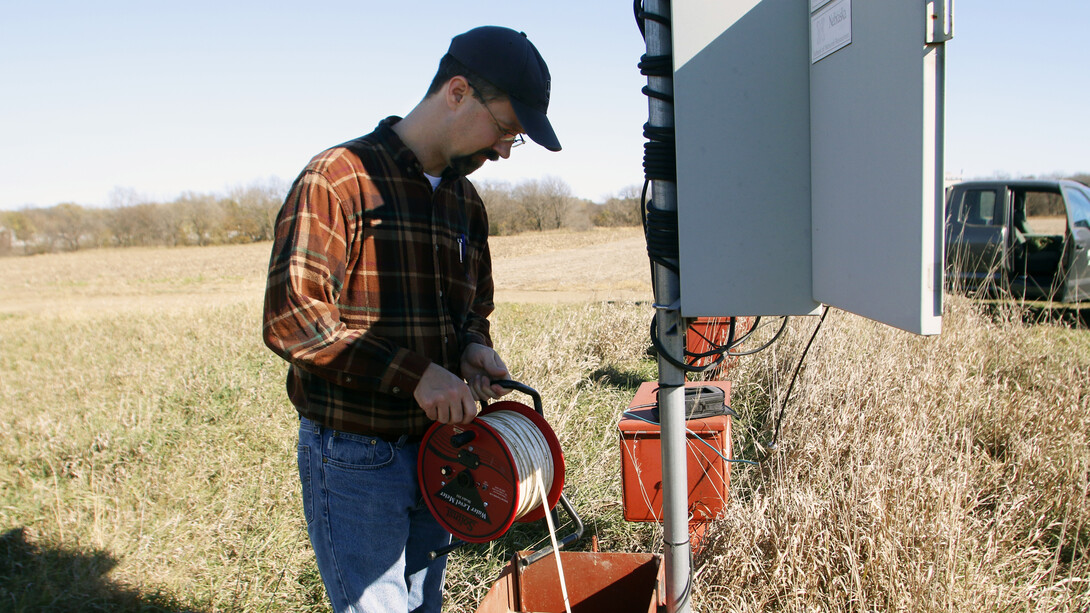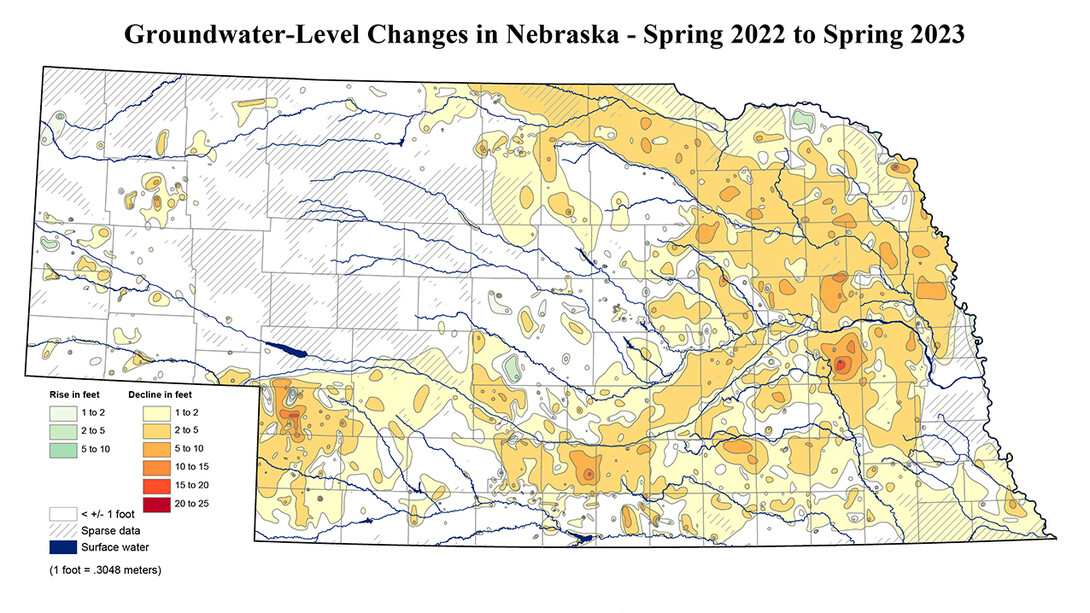
Groundwater levels in much of Nebraska continue to decline after several years of prolonged drought, according to the most recent statewide groundwater level report from the Conservation and Survey Division in the University of Nebraska–Lincoln’s School of Natural Resources.
Of the 4,822 wells measured statewide, 85% exhibited declines from spring 2022 to spring 2023.
Groundwater level changes in Nebraska are impacted by withdrawals, primarily for irrigation, and the amount of recharge from precipitation. The hotter and drier a growing season is, the less water is available for aquifer recharge and the more water is required for supplemental irrigation, thus, groundwater levels decline. Conversely, in years of above-average precipitation, more rainfall leads to greater recharge, less pumping is required for irrigation, and groundwater levels rise.
From January 2022 to January 2023, precipitation recorded at all 189 reporting stations in Nebraska was less than the 30-year normal. Below-average precipitation and an increased need for irrigation led to groundwater level declines of more than 20 feet at some locations. Moreover, because drought conditions have persisted across much of the state since mid-2020, groundwater levels have declined significantly in the last three years. On average, water depth in Nebraska wells has declined by 3.15 feet since spring 2020. Early reports for 2024 suggest this trend will continue in at least the eastern third of the state.

Despite recent groundwater level declines, Nebraska has significantly more groundwater resources than other states that sit atop the critical High Plains aquifer system. It also has a nation-leading system of groundwater management by virtue of its 23 natural resources districts, and groundwater use is regulated through regional management plans. In certain areas of the state, however, recent and long-term groundwater level declines are concerning. Some wells may eventually go dry or need to be drilled deeper to maintain groundwater availability.
Long-term change maps in the report still depict the abundance of groundwater in the state. Local changes in groundwater levels from predevelopment times (before the widespread use of groundwater for irrigation) range from increases of more than 120 feet to declines of about 130 feet. Groundwater levels in most of Nebraska have experienced a net change of less than 20 feet since predevelopment times. Parts of Chase, Perkins, Dundy and Box Butte counties, in contrast, have experienced major, sustained declines in groundwater levels due to a combination of factors. Irrigation wells are notably dense in these counties, annual precipitation is comparatively low, and there is little or no surface-water recharge to groundwater there.
The Conservation and Survey Division report was authored by Aaron Young, Mark Burbach, Susan Lackey, R. M. Joeckel, Jeffrey Westrop and Nawaraj Shrestha.
A free PDF of the report can be downloaded here. Printed copies can be purchased for $7 at the Nebraska Maps and More Store, 3310 Holdrege St., or ordered by phone at 402-472-3471 or online.







